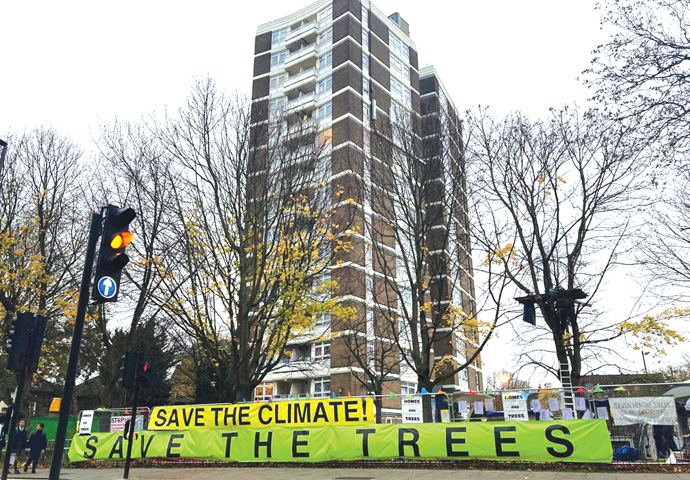It’s not just a question of saving the trees
Friday, 11th December 2020

The Dixon Clark Court site
• INTERESTING that the GLA is lobbing an extra £10million in “grant funding” to Peabody in order to ensure that the huge housing association sticks to its previous social-homes pledge on the former HMP Holloway site.
As Marj Mayo a director of the Community Plan for Holloway, says: “…42 per cent is not a boost, just the original percentage announced when Peabody bought public land using loans and grants of public money”, (Jail site homes affordable rent boost, November 27).
Surely next May’s Covid-19-delayed GLA elections can’t have anything to do with the latest hand-out which increases to a massive £52million the financial help Peabody will receive from London’s mayor? And the city’s taxpayers?
What a contrast with the financing of the proposed scheme for the Dixon Clark Court estate in the south of the borough where permission has been granted for an additional 25 council homes (27 new-builds minus two existing properties which will be converted into storage units).
What hasn’t been publicly discussed is that the sell-off of a number of the new council units under Right to Buy (RTB) has been factored in to the “financial viability” of the proposal (every tenant has the right to purchase their home after three years).
Knowingly calculating income from RTB sales of new council dwellings into the long-term sustainability of the development puts a different light on the “much-needed new homes” mantra used to blast those currently occupying part of the site along with their supporters, (New homes are more important than the trees, November 27).
Let’s be clear, no council homes will be built on the Canonbury Road green space. This area is reserved for a six-storey block of 14 for-sale leaseholder properties which the Islington Council claims is fundamental to the financing of the social homes. It is for this that six 57-year-old trees will be destroyed.
An error in the planning report went unnoticed by elected members of the planning committee at the time, while a newly released 2019 document admits that an “additional tree to be removed is a small cherry sapling that needs to be removed to facilitate construction. This will be replaced as part of the landscaping scheme.”
Tucked away in para 20.2 of the council’s code of practice for construction sites, dated May 2018 – two months after planning permission was granted to fell the mature trees and build on DCC residents’ green spaces – the following can be found: “Trees, shrubs and other significant vegetation are of particular value in Islington due to the borough’s dense urban nature and limited amount of green space.
“The positive impact that trees have in improving air quality, storm-water interception and air temperature are increasingly important due to projected future temperature increases as a result of climate change”.
Mature trees fulfil this environmental role many times over saplings. It’s the loss of these trees that the occupiers are objecting to.
It seems the politicians are happy to preach to their contractors while ignoring their own ecological advice in pursuit of a manifesto commitment to build a set number of council homes.
A reminder: the majority of the council homes are to be built on the communal garden at the rear of the site.
The DCC scheme is outdated and environmentally compromised, while Covid-19-led increases in unemployment must cast doubt on RTB income contributing to its financial future. The council would win plaudits for recognising this.
MEG HOWARTH
Ellington Street, N7